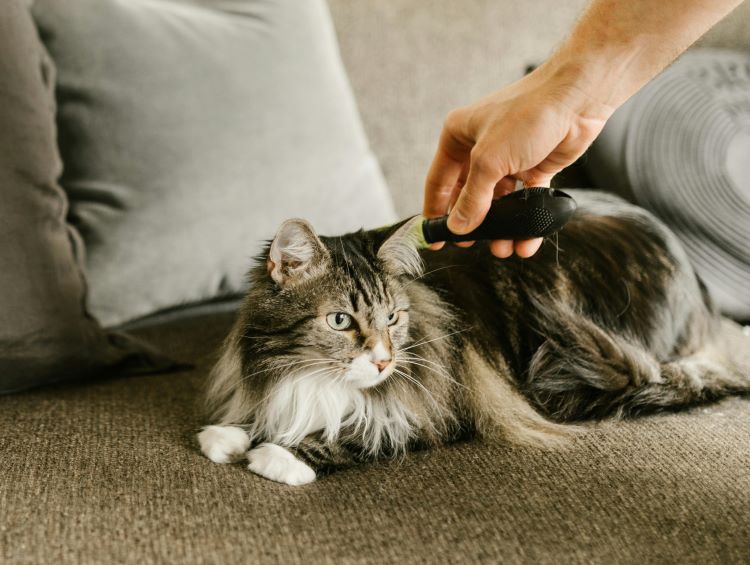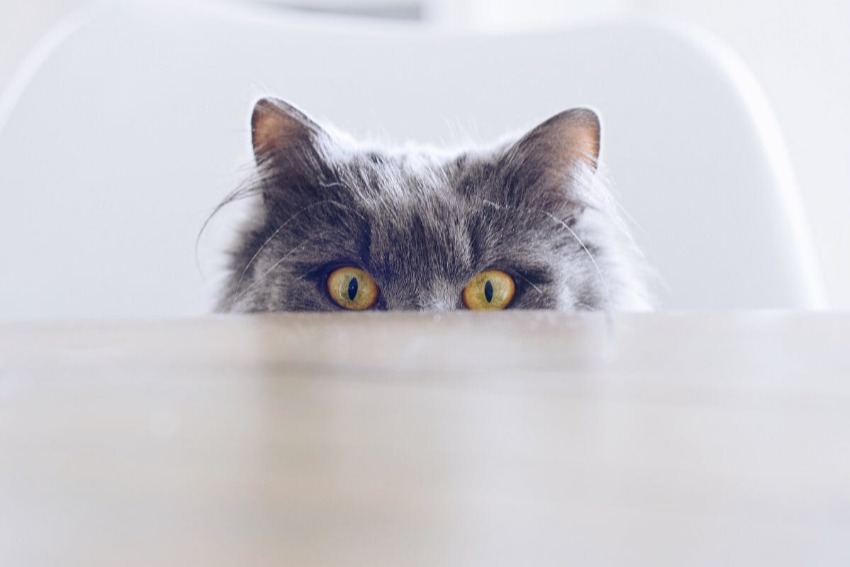Ready to help treat your pet to a healthy life?
Why is my Cat Shedding So Much?
By : Kelli Rascoe & Trupanion Staff | Updated Feb 25, 2025

It’s a simple fact of having a cat: they shed. Whether your feline has long hair, short hair, or somewhere in between, you’re going to notice some kitty hairs accumulating pretty much wherever they choose to spend their time around the home. But have you noticed more cat hair than usual lately?
In most situations, a cat shedding a lot is no cause for concern. That said, it’s a good idea to become familiar with natural cat shedding patterns and learn what’s normal for your own feline. In rarer cases, a cat shedding excessively could be a sign of an underlying health issue that needs to be addressed. Here’s what all responsible cat owners need to know.
Why cats shed in the first place
Both dogs and cats shed. This is a natural, necessary process to remove dead or damaged fur and maintain a healthy coat. Though it happens year-round, it is influenced by factors like season, breed, health, and diet. Indoor cats, exposed to artificial lighting and stable temperatures, may shed more consistently throughout the months than their outdoor counterparts. Additionally, stress, allergies, or medical conditions can also contribute to excessive shedding.
“The most common cause of shedding is normal seasonal shedding, which usually occurs in the spring and fall with changes in temperature,” says Trupanion veterinarian Dr. Sarah Nold, DVM. “You may notice more fur accumulating on furniture or simply coming out when you pet your cat during these times.”
Does cat breed affect shedding?
Cats come in a variety of fur lengths and coat textures thanks to their genetics, but all cats shed regardless of breed. Yes, this even includes “hairless” cats like the Sphynx (which still have small amounts of hair). But does any of this actually affect how much your kitty sheds their fur?
“No certain cat breed is more prone to shedding, but shedding may be more noticeable in a medium or long-haired cat,” Nold explains. “And as you may have guessed, a hairless cat breed like a Sphynx will probably have less shedding.”
Even if your cat has long fur, that doesn’t necessarily mean they’ll have a shedding problem. Every cat is different, and they can react differently to changes in season, temperature, environment, or even allergies.

How much shedding is normal for a cat
Your cat has a lot of hair. And when we say a lot, we mean a LOT. There is no one “official” number, but the average cat has anywhere between 60,000 and 120,000 hairs on their body at any given time. And, like human hair, these follicles are in varying stages of growth and decline. The exact amount your cat sheds a day varies depending on a number of factors (like breed and seasons, as discussed), but a healthy feline will lose anywhere from 100 to even well over 1,000 hairs a day.
It’s a good idea to clean your cat’s bedding and other popular hangout areas regularly, as this will not only keep these spots relatively hair-free but also help you learn what’s normal for your pet. Notice a large uptick in hairs between cleanings? The season could be changing, or something could be off with your pet. Grooming your pet regularly with a pet brush or a cat grooming mitt will also help give you better insight (and prevent fur matting).
When to be concerned
So, how to tell if your cat is shedding too much? According to Nold, hair shedding combined with changes in certain habits can be cause for concern. If you notice any of the following, it’s time to give your vet a call:
- Rubbing up on things frequently, especially hard surfaces
- Scratching or biting themselves more often
- Chewing or licking the same spot
- Changes in coat appearance
“Shedding can also become a concern if you notice areas of hair thinning or hair loss, like Alopecia,” says Nold. “Also, your pet may not always let you know something is bothering them. In fact, there may be an underlying medical condition for hair loss.”
An uptick in hairballs can also be a sign that your cat is shedding too much and may have a health issue. Some cats never seem to experience hairballs while others (especially longer-haired breeds) may routinely get them from time to time. But if you’re suddenly starting to notice them more often, it’s time to pay closer attention.
“Shedding can also be a concern if your cat ingests large amounts of hair while self-grooming, as it can lead to the formation of hairballs. These hairballs can be large enough that they can block the GI tract and have to be surgically removed,” Nold explains. “Regular brushing of your cat, especially during seasonal shedding and with long-haired cats, can help prevent the formation of hairballs. If your cat has a tendency to form hairballs, talk to your veterinarian. They may recommend medication to help with the passage of hairballs through the GI tract.”

Protect your cat’s health
A cat shedding too much can be alarming, but the good news is that the cause is usually something that can be corrected. Whenever you notice changes in your cat, give your veterinarian a call. Whether your cat is shedding more fur due to stress or an underlying medical condition, it’s important to address the cause quickly before things get worse.
With this in mind, it’s a good idea to protect your pet with cat insurance if you haven’t done so already. While a cat insurance policy won’t cover pre-existing conditions that may cause feline hair loss, the right coverage will cover future new, unexpected conditions.
Interested in learning more? Check out how pet insurance can help indoor cats.
